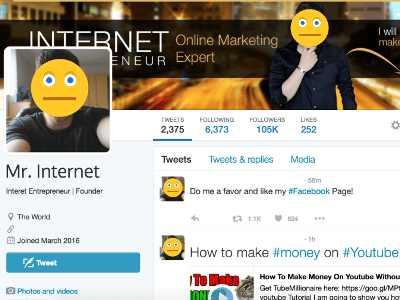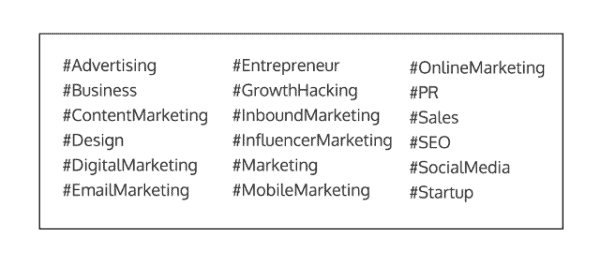
 When Twitter debuted in 2006, the new concept of sticking a hashtag, what used to be known as the pound or number sign, in front of a word or short phrase in order to group it for searchability was relatively novel.
When Twitter debuted in 2006, the new concept of sticking a hashtag, what used to be known as the pound or number sign, in front of a word or short phrase in order to group it for searchability was relatively novel.
In the meantime, we’ve become used to hashtags, sometimes slapping one on a word more or less gratuitously in hope that it might spark some kind of wider conversation, using it as social media kindling hoping to start a virtual fire.
A decade in, though, and hashtags are widely regarded as useless noise, with Toronto infographic company Venngage going so far as to say that the hashtag has outlived its usefulness entirely, saying that “for businesses, they are more trouble than they are worth. And honestly, at this point, they look unprofessional.”
Bots on social media, in theory, are a helpful tool to help businesses standardize the process of engaging a larger community around a particular topic or theme.
In practice, however, bots on social media are more like the army of flying monkeys employed by the Wicked Witch of the West in the Wizard of Oz, senselessly flying around and destroying things on her command to “Fly, my pretties!”
In short, a hashtag has become the surest sign that a Tweet is actually spam, used mainly by not-exactly-reputable growth hackers or SEO marketing gurus, whose explicit mission in life is to muscle in on actual human conversation and co-opt your actual water cooler banter as yet another aspect of their omni-channel strategy.
Venngage writer Ryan McCready sifted through 137,052 Tweets over a seven-day period, and found, no big surprise, that hashtags that seem to have any sort of traction whatsoever are quickly co-opted by a combination of bots and re-tweet farms (yes, these exist) in order to spam genuine human Twitter users.
For actual humans using Twitter recreationally, this already makes online life more of a drag than it already is, but it’s another order of magnitude for social media managers responsible for business oriented Twitter or managing a brand identity.
By Twitter’s own estimation, approximately 5% of the more than 300 million monthly users are spam accounts, 15 million of which are spamming and re-tweeting 1,000 times per month, generating 14.95 million false notifications per month.
On the one hand, hashtags can be extremely useful for promoting events, organizing live chats, and publicizing social activities.
But if the problem of hashtags comes down to a question of signal vs. noise, McCready’s unfortunate conclusion is fairly stark: Hashtags Don’t Work For Businesses.
Or at the very best, they’re more trouble than they’re worth.
To begin sifting the wheat from the chaff, Venngage devised a couple of tests for detecting which accounts were merely bots opportunistically re-tweeting hashtags, the first of which was checking to see if a given account’s following count overwhelmingly outnumbered their follower count.
Dubious Twitter accounts followed 4.2x more accounts than were following them, while human accounts followed 0.36x times more than their follower number.
The second metric turned out to be counting the number of tweets the account liked and the number of tweets they shared.
Finally, another good indicator for the vast majority of questionable Twitter accounts is age, with the accounts of real people more likely to be at least two years old while bots tended to churn frequently, usually operating accounts started in the last six months.
As far as hashtags are concerned, the “growth hacker” or phony Twitter accounts tend to use obvious terms, such as #advertising or #business or #marketing or #SEO, with #influencermarketing and #startup and #growthhacking making up the depressing difference.

Venngage found one particular tweet, related to music promotion, that spread itself 17,821 times in 24 hours, mostly shared by bogus accounts, with only five of the 17,000 accounts having more than 10 followers while following zero other accounts.
The message for social media managers, though, remains obvious. Use Twitter like you’re having a real conversation. Use it like you mean it.
Used poorly, Twitter, or any social media for that matter, is a waste of your time and your employer’s money.
But with common wisdom now dictating that social media in general, and Twitter in particular, is a business necessity, the idea that we should just stop using it seems counter-intuitive, if not suicidal.
Nonetheless, suggestion #1 in McCready’s conclusion is: Stop using Twitter.
He adds, “Unless you have the budget and time to properly craft a Twitter strategy, or your customers specifically use Twitter to get their content or news. There are millions of other people creating noise that you need to cut through to even have the chance of being seen. And unless you want to spend some coin, you will be disappointed.”
If you have to use Twitter to grow your business or brand, he suggests, put the time in and treat it like part of your daily grind, no bots and no SEO shortcuts. Your followers will notice when you develop the tell-tale signs of bot-like behaviour.
Finally, don’t use hashtags, at all. “It is like putting out a welcome mat for bots to follow and interact with your content,” writes McCready.
Otherwise, you risk becoming part of the noise that overwhelms whatever signal is left in social media.

Leave a Reply
You must be logged in to post a comment.



 Share
Share Tweet
Tweet Share
Share




Comment